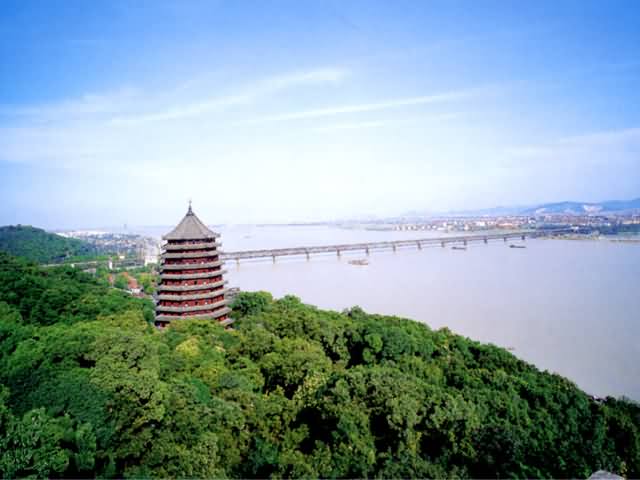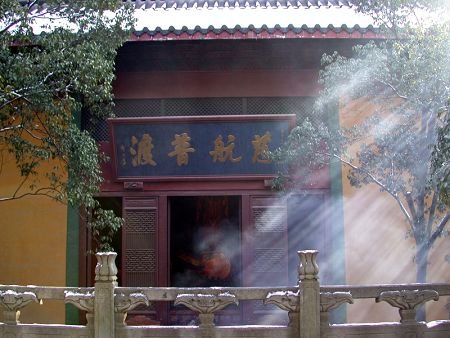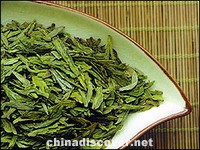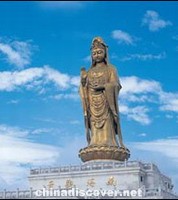Tianmu Mountain
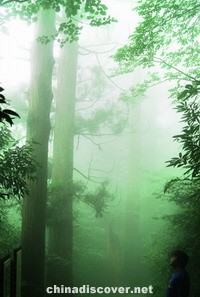
As a crystal and shining "green jade" casting in the middle of coastal China, Tianmu Mountain National Nature Reserve sits in the northwest of Tianmu mountain range of Zhejiang Province. It is within the municipality of Lin'an. The reserve is also at the north edge of central-subtropical zone. It coversan area of 4,284 ha, comprising of a core zone of 676 ha, a buffer zone of 951 ha, and a transition zone of 2,497 ha. About 88.2% of the reserve's area is forest-covered. In 1956, the area was zoned by the Ministry of Forestry of China as a non-logging area. In 1986, the area was approved by the State Council as a national nature reserve.
In 1996, it became a member of the UNESCO's "Man and Biosphere Reserve Network".The reserve hasmoved onto the new arena of international collaborations ever since.
Giant Trees
West Tianmu Mountain is well-known for its giant trees providing baldachin-like shades. Skyrocketing ancient trucks including aged cedars, pines, maples, ginkgo and other proto-genic trees are all over the place. Among them, the most attractive is "the four unsurpassed scenes". One wild ginkgo family forms a patch of forest. The huge Japan cedar community can rarely be seen in the world. The height of golden larch is considered as the champion of this species in the world. Tianmu ironwood is referred to as "the only son of the Earth" .
It is located between two steep cliffs of Lion Rock, about 3 meters high, 15 meters wide and 60 meters long. It is said that the master of Taoist Zhang Daoling was born here. Under the rock, there is a cave named as "the cave of the revered Mr. Zhang', the secluded place of Mr. Zhang. A spring comes out from the cave. To the west of the cave, there is a "Red Pool" at the foot of the cliff. It was the place where Zhang Daoling made pills of immortality.
Under the rock, there is a cave named as "the cave of the revered Mr. Zhang', the secluded place of Mr. Zhang. A spring comes out from the cave. To the west of the cave, there is a "Red Pool" at the foot of the cliff. It was the place where Zhang Daoling made pills of immortality.
Giant Tree King
This tree was titled as "One Thousand years Tree" even in the Song Dynasty. According to the measurement, it is 26.5 meters in hight, 2.33 meters in diameter, 42.9 cubic meters in volume. The Emperor Qianlong in the Qing Dynasty visited Tianmu Mountain twice to sightsee. He was in deep love with this giant Japan cedar and said, "I had visited most of famous mountains in the country, but had never seen so huge a tree as this before". He untied the jade belt from his imperial gown to circle and measure this tree. At the time of measuring, he said, "huge, huge, this cedar can be called the king too." Since then the reputation of "the giant tree king" has been going afar.
Waterfalls
This is the origin of Shuanqing Stream. There is a block of rock squatting down just like a crouching tiger. The water pours out from the top of the peak and forms the cascading falls. Green peaks are layered by deep valleys and steep cliffs. In the Tang Dynasty, Zhang Xiaobiao exclaimed the magnificent sight with a poem "Tianmu Falls": Autumn river overflows like the sky, the heaven besprinkles down ten thousands long cloth-like falls, fathomless thunders conceal in the cloud, the lonely lightening hangs on the rocks and trees.
Chanyuan Temple
It sits at the foot of four peaks, Zhaoming, Xuri, Cuiwei and Yanghe, and is surrounded by the Qinglong (Green Dragon) and Baihu (White Tiger) Mountains. The temple is sheltered by old trees and circled by pure streams. It was built in the Ming Dynasty (the year of 1425). In 1733, the Emperor Yongzhen inscribed the board "Chanyuan Temple" for this temple.  It covered an area of 3 hectares and had 500 rooms in the temple in its thriving period. It was one of the main Buddhistly holy lands in Southeast China.
It covered an area of 3 hectares and had 500 rooms in the temple in its thriving period. It was one of the main Buddhistly holy lands in Southeast China.
Old Openning Temple
It is at the central zone of the mountains where valuable and rare animals and plants live and scenic spots and historic relics are clustered. The temple was the relic of the Zen Temple of Shizi (Lion) AuthenticSect, the origin of Linji Sect of Buddhism. It was built by the senior monk Gaofeng and his disciples Duanya and Zhongfeng in the Yuan Dynasty. The emperor Renzong bestowed a tablet inscribed "the Zen Temple of Lion Authentic Sect". It was a thriving temple with a good reputation. It is regarded as the birthplace of Linji Sect Yongyuan Temple Fraction of Japanese Buddhism.
Lion's Mouth Pass
It stands to the west of Old Opening Temple (Kaishan Old Hall) with the rising rock, looking like the head of a lion with ears and eyes. The site is thereby named as Lion Rock. The cave in the middle of the rock mimics the mouth of a lion. This is why this scenic spot has the name of "Grand Pass" or "Dead Pass". In the Yuan Dynasty, senior monk Gaofeng sat in meditation here to express his loyalty to Buddhism.
Four-sided Peak
It is the Tianmu's wonder of scenery, and is referred to as "the terrace of four-sided peak". On top of the peak is a pavilion, "standing jade pavilion". After the establishment of the Zen Temple of Shizi (Lion) Authentic Sect, the senior monk, Gaofeng, once sat in meditation here. Looking over from the peak, one can find himself facing deep valleys, sharp cliffs and overspread old trees at three sides. Looking at scenes further afar, one can catch a view of meandering mountains, seeming like thousands of horses galloping, in the background ofcroplands, villages and so on. Tianmu coiling pines grown in the crack of cliff hang over the sky in a way as eagle approaches the sea surface. This spot possesses six characteristics of "deep, remote, secluded, serene, amazing and beautiful". In 1934, the famous artist, Xu Beihong, brought students of Chinese Fine Arts College to here to sketch painting. What is left is his treasury painting portraying a picture of "Tianmu Autumn Colors".
